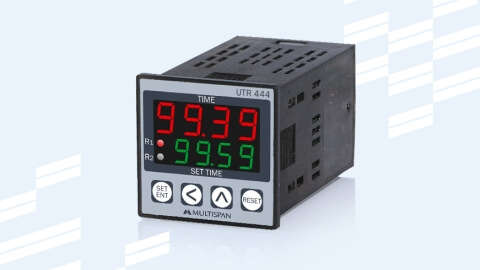Each embedded project requires a different approach, especially when it comes to developing what's under the hood. Depending on the hardware you choose, your project may either be successful or cause time and cost losses. Whenever a business owner comes up with a distinct idea of an individual device or whole embedded system, their first development brainstorm revolves around the component selection.
A microcontroller is the most important component you should think of first. With the right MCU, your device will run smoothly, attracting plenty of end users. One of the most popular MCU manufacturers is STMicroelectronics, whose products are used worldwide in thousands of solutions. Having hands-on experience with ST's microcontrollers, our embedded engineers collected useful knowledge about their MCUs and are happy to share it.
In this article, our Head of Embedded Development Pavlo Matiieshyn sheds some light on the ST microcontrollers we at Lemberg Solutions use for embedded projects of all sorts.

About STMicroelectronics and MCUs they offer
When it comes to choosing an MCU manufacturer, numerous embedded engineers stick to STMicroelectronics, and here's why. ST microcontrollers cover wide-ranging tech companies' needs for IoT and connectivity, smart mobility, power systems, and consumer electronics. You can opt for cost-effective 8-bit MCUs up to MCUs powered by ARM Cortex-M cores. Building a solution with this manufacturer ensures architecture flexibility and power efficiency, which significantly facilitates the development process and reduces time to market. With energy efficiency, integrated hardware and software ecosystems, and a built-in security framework offered by STMicroelectronics, you can build a complex embedded system that is reliable and efficient.
Read more: FreeRTOS vs. Zephyr Project for Embedded IoT Projects
Low-power vs. high-performance ST microcontrollers
Each MCU meets different needs depending on the type of device you aim to assemble. For this reason, you should know which functionalities and specifications will form your solution to choose the right MCU.
Below, we cover low-power and high-performance MCUs, including their uses and differences.

Low-power ST series
For devices designed to operate with minimal energy consumption levels, ST offers a low-power solution — ultra-low-power STM32L and STM32U series of microcontrollers. Integrating microcontrollers from this set will help you reduce a device's power consumption. Our engineers commonly use STM32L microcontrollers for battery-powered devices. The peripherals of these MCUs are highly flexible, and these MCUs can operate in various low-power modes. The ability to put a core into sleep mode while the other peripheral devices remain operational and low (1.65V) supply voltage is crucial for achieving minimal power consumption. Moreover, STM32L features a built-in segment LCD controller, which, combined with a real-time clock (RTC), allows you to display information while maintaining total power consumption as low as 2 uA.
Low-power MCUs open a wide field of possibilities for use. For instance, you can integrate them into smart metering systems for water, electricity, and gas meters. Consumer electronics also benefit from low-power MCUs since they ensure extended operation without the need for battery recharging or replacement. Safety systems for industrial or residential settings, such as fire alarms and smoke detectors, also heavily rely on microcontrollers with minimal power consumption.
In addition to being low-power, STM32L MCUs are cost-effective, allowing businesses to save costs in mass production.
High-performance ST series
If a client would like to develop a device with complex functionalities, we will choose an MCU from a high-performance ST series. The series is known for its advanced capabilities and high processing power. These microcontrollers handle complex and demanding tasks that require high performance. The series is based on a 32-bit ARM Cortex-M core, providing high processing power and efficiency. Additionally, the series supports a wide range of memory sizes, including flash memory and RAM, to provide ample storage for complex algorithms and data. The high-performance series is suitable for industrial tasks and loads with extensive data processing requirements. We recommend using this series if a device needs to perform edge analytics, running real-time data analysis seamlessly.
Most frequently, our engineers use the following high-performance MCUs:
- STM32F4 series
The MCUs from this series are based on the Cortex-M4 core, which provides high processing power and efficiency. With an embedded digital signal processor (DSP), the set enables real-time control and provides a range of cutting-edge peripherals and substantial memory volumes. This series is suitable for various applications, including audio/motor control and digital power conversion.
- STM32F7 series
This series is based on the Cortex-M7 core, which provides even more processing power and efficiency than the Cortex-M4. It offers additional peripherals, such as serial audio interfaces and multifunction direct memory access (DMA) controllers. You can apply the STM32F7 set the same way as the STM32F4 series — for audio/motor control and digital power conversion.
- STM32H7 series
These MCUs are based on a dual-core architecture and work at speeds up to 480 MHz. The STM32H7 series is considered the best among other MCUs from the high-performance class. It incorporates CAN controllers, Ethernet, digital camera interface, SAI, and USB. You should opt for this set if your device requires extreme data processing and top-quality peripherals.
In addition to the listed qualities, the high-performance series can run in low-power modes. Its vast memory choices enable a vast scope of application, including those that require long battery life or energy-efficient operation. However, you don't usually need such complex MCUs for devices with limited functionality.
Security measures for ST microcontrollers
As the popularity of Internet of Things (IoT) development continues to grow, enhanced cybersecurity measures become increasingly important. MCUs, in particular, are vulnerable to cyber attacks through vulnerabilities in communication channels. To combat these threats, you must configure MCUs focusing on communication channel encryption and memory protection.

ST microcontrollers provide a range of security measures to ensure the safety of internal data processes and device entry points. These include:
- Software isolation to secure internal data processes
- Interface security to secure device entry points
- Embedded system monitoring to detect device intrusion attempts or suspicious activities
- Secure boot and storage to add protection during booting and data storing
- Secure firmware update (SFU) to ensure the integrity and authenticity of firmware updates
- Static secure configuration to prevent unauthorized device access
- Integrated firewall to protect hardware, bus transactions management, and control flash memory accesses.
Note that manual software and hardware protection alone is not enough to ensure the security of an IoT device. The solution's architecture should be secure from the outset. That's what you'll get using ST microcontrollers.
How we choose MCUs [+real cases]
Our embedded engineering team is always ready to help you with component selection. Read below for details of this process and real-life examples of choosing and integrating MCUs in our projects.
Component selection process at Lemberg Solutions
At the stage of project architecture design, our embedded engineers are actively involved in component selection based on the client's requirements. An MCU takes a leading role among other hardware components since it controls the way a device functions. Being an ST Authorized Partner, we have broad competence to decide which inputs and outputs of the MCU should be involved, what peripheral devices to activate, and how to process input data. It allows us to create state-of-the-art devices that can top the market with their unique features and business value.
Having an embedded device idea, clients usually need expert advice about the MCUs that will fit their projects. Our team collects information about the future device and chooses the MCU and other components. We estimate the MCU's price, type, needed peripherals, memory size, etc. Our engineers pay the most attention to power consumption, performance, and cost to match the client's budget and device features.
If you want to develop your project with the help of Embedded Linux, check out our article Embedded Linux: What It Is, When and How to Use It.
Examples of MCU Use
Lemberg Solutions has a large embedded development services department with multiple ST-based projects completed. Here are some of them and useful tips on picking an MCU.
- MCU for an agricultural project
The goal of this project was to create a cost-effective solution by configuring multiple sensors for measuring humidity, pressure, and temperature. We established communication with a Wi-Fi chip and implemented control over lightning and irrigation systems. The business logic for this project was simple and required little flash memory. For this reason, we selected the STM32F1 MCU series for this project.
- HMI for industrial application
The client asked us to design an HMI for a device that controls climatic equipment. The HMI had to include an LCD with high resolution, touch screen, Ethernet, and communication based on the RS-485 standard. The MCU needed a significant amount of RAM and flash memory to support smooth LCD updating and a user-friendly UI. We chose the STM32F42X MCU series with a high operating frequency of up to 180 Mhz, 2M of program memory, and crucial built-in peripherals like LCD-TFT controller, SDRAM controller, SDIO, and Ethernet.
- Smart flooding controller
In this project, we built a smart flooding controller with backup power and wireless connectivity. The hardware contained a measurement circuit, a couple of LEDs, a Wi-Fi chip, and a BMS. The business logic of this device required at least 24h continuous operation on a built-in battery. So we decided to use an ultra-low-power STM32L1 MCU series, containing all needed peripherals. With this MCU on board, we achieved the desired power consumption and successfully completed the project.

Final thoughts
Choosing the right MCU can decide the fate of your embedded project. With a suitable microcontroller, your device will perform at the highest level and meet your and end users' expectations. Our embedded engineers take into consideration the specific requirements of each project to determine the most suitable MCU.
For battery-powered devices, our engineers typically recommend using ultra-low-power STM32L series manufactured by STMicroelectronics. These MCUs are perfect for low power consumption purposes and are also cost-effective.
For devices with complex functionalities, we recommend integrating an MCU from a high-performance ST series. They provide power efficiency and more options for peripherals and memory size. Our engineers usually prefer the STM32F4 series (ensures real-time control), STM32F7 set (provides multiple peripherals), and STM32H7 set (has built-in dual-core architecture).
On top of that, MCU manufacturers should guarantee built-in security measures to enable protection against cyber attacks. STMicroelectronics offers a range of security features such as software isolation, interface security, embedded system monitoring, secure boot and storage, secure firmware update (SFU), static secure configuration, and an integrated firewall to protect the hardware.
Contact us to build an embedded system with an ST Authorized Partner covering a wide range of embedded development services.



